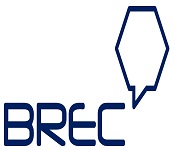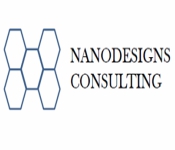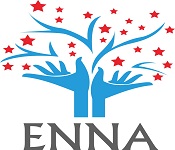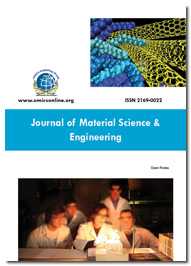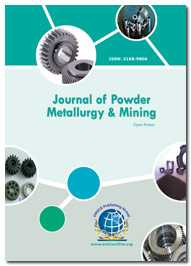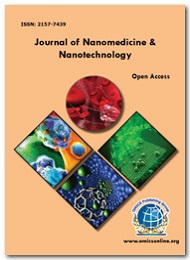Theme: Manifold traits of Materials Science and Engineering
Materials Congress 2016
Dear Colleagues,
On behalf of ConferenceSeries Ltd, it is my pleasure to invite scientists, academicians, young researchers, business delegates, and students from all over the world to attend the 5th World Congress on Materials Science & Engineering on June 13-15, 2016. The conference will be held in Alicante, Spain.
Based on the strong success of the first four Materials Science conferences in the US, ConferenceSeries Ltd planned to continue its Materials Science conferences in Europe starting in 2016. The goal of the 2016 meeting is to bring together, once again, a multi-disciplinary group of scientists and engineers from all over the world to present and exchange breakthrough ideas relating to materials science and engineering. The conference promotes the globalization of quality research, focusing attention on recent achievements in the field of materials science, nanotechnology and future trends and needs.
We’re looking forward to another excellent meeting, with great scientists from countries throughout the world sharing their new and exciting results in materials science and engineering, to be held in Alicante, Spain from June 13-15, 2016.
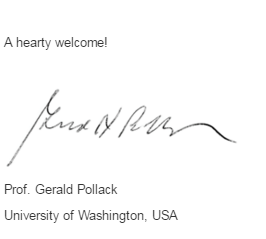
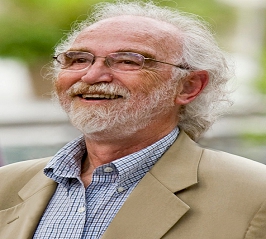
With the successful journey of Materials Science conferences in USA, ConferenceSeries Ltd planned to continue its Materials Science conference series saga in Europe from 2016.
On this auspicious occasion, ConferenceSeries Ltd invites the participants from all over the globe to take part in the 5th World Congress on Materials Science and Engineering at Alicante, Spain during June 13-15, 2016.
The theme of the conference highlights the interdisciplinary nature of Materials Science and Engineering. Scientific Tracks designed for this conference will enable the attendees and participants to learn extremes. This Materials Conference will feature world renowned keynote speakers, Materials Science workshops and career guidance sessions.
ConferenceSeries Ltd organizes 3000+ Global Events with over 600+ Conferences, 1200+ Symposiums and 1200+ Workshops in USA, Europe & Asia with support from 1000 more scientific societies and publishes 700+ Open access journals which contains over 30000 eminent personalities, reputed scientists as editorial board members.
Track-1: Materials Science and Engineering
Materials science and engineering is an integrative approach to science that involves designing, choosing, and using three vital classes of materials—metallic materials, ceramics, and polymers. Materials are so important in the development of civilization that we equate ages with them. In the beginning of human life on Earth, the Stone Age, people used only natural materials, like stone, clay, skins, and wood. When people established copper and how to make it harder by alloying, the Bronze Age started about 3000 BC. The employ of iron and steel, a stronger material that gave advantage in wars started at about 1200 BC. The succeeding big step was the discovery of a cheap process to make steel around 1850, which enabled the railroads and the building of the contemporary infrastructure of the industrial world. Around 50 Materials Science Conferences are being organized around the world every year. The global market is projected to reach $6,000 million by 2020 and lodge a CAGR of 10.2% between 2015 and 2020 in terms of worth. The growth in market is estimated to be driven by the increasing need for aerogel materials from oil and gas and construction applications. The North American region remains the largest market, accompanied by Asia-Pacific. The Europe market is estimated to be growth at a steady rate due to economic redeem in the region along with the expanding concern for the building insulation and energy savings. The U.S. Bureau of Labour Statistics (BLS) provides annual wage approximates for more than 800 individual occupations. Newly revealed figures for 2012 put BLS Code 19-2032 (an occupational class encompassing materials scientists) in 82nd place in yearly wages. The group, which incorporates 7,970 employees all over the country, posted an average annual salary of $89,740.
Related conferences
6th International Conference on Materials Science and Engineering, Sept1- 3, 2016, Atlanta, USA; 3rd International Conference on Smart Materials & Structures, March 20-22, 2017 Orlando, USA; International Conference on Applied Crystallography, Oct 17-19, 2015¸Houston, USA; International Conference on Polymer Science and Engineering June 23-24, 2016 New Orleans, USA; 2nd International conference on Ceramics and Composite Materials, July 25-27, 2016 Berlin, Germany; 2nd Annual Biomaterials Congress March 27-29, 2017 Madrid, Spain; IEEE, International Conference on Micro Electro Mechanical Systems, Shanghai, China; XXV International Materials Research Congress, August 14-19, 2016 Cancun, Mexico; 3rd International 3D Materials Science Congress (3DMS) 2016, July 10–13, 2016, St. Charles, Illinois, USA; The Minerals, Metals and Materials Society; Materials Research Society
Track-2: Nanomaterials
The fields of nanoscience and nanotechnology hinge on materials with critical dimensions in the nanometer range. Examples encompass organic macromolecules, inorganic catalyst particles, and size-quantized metal and semiconductor structures. The properties of these materials hinge on the size and shape of the nanoparticles and their ordering in 2-D and 3-D structures nanomaterials research follow a materials science-based approach to nanotechnology, leveraging advances in materials metrology and synthesis which have been established in support of microfabrication research. Materials with structure at the nanoscale usually have unique optical, electronic, or mechanical properties. Scientific’s index of countries' ability to take advantage of emerging technologies stipulates that the US, Germany, Taiwan and Japan have the combination of academic supremacy, technology-hungry companies, skilled workforces and the availability of early stage capital to assure effective technology transfer. Corporate research and private funding were thought to have surpassed government funding figures as far back as 2004. But China will splurge US$2.25 billion in nanotechnology research while the US will splurge US$2.18 billion. In real dollar terms, adjusted for currency exchange rates, China is only spending about US$1.3 billion to the US’s $2.18 billion. US have invested $2.46 billion while China has allotted $2.2 billion.
Related conferences
14th Global conference on Nanomaterials and Nanotechnology, May 04-06, 2017, Dubai, UAE; 7th World Nano Conference, May 19-21, 2016, Osaka, Japan; 8th World Medical Nanotechnology Congress and Expo, June 9-11, 2016, Dallas, USA; 11th International Conference on Nanoscience and Molecular Nanotechnology, October 20-22, 2016 Rome, Italy; 12th Nanotechnology Products Expo, Nov 10-12, 2016, Melborne, Australia; IEEE Conference on Nanotechnology Materials and Devices – October 09-12, 2016 in Toulouse, France; 16th International Conference on Nanotechnology, August 22-25, 2016, Sendai, Japan; Nanotechnology Industries Association; American Nano Society; International Association of Nanotechnology.
Track-3: Biomaterials
Biomaterials can be obtained either from nature or synthesized in the laboratory using a variety of chemical approaches employing metallic components, polymers, ceramics or composite materials. They are often used and/or adapted for biomedical applications, and thus consist of whole or part of a living structure or biomedical device which performs, augments, or substitues a natural function. Such functions may be benign, like being used for a heart valve, or may be bioactive with a more resoponsive functionality such as hydroxy-apatite coated hip implants. Biomaterials are also used every day in dental practice, surgery, and drug delivery. His studies reveal that the world wide biomaterial market over the forecast period of 2012-2017 The world-wide market for biomaterials is estimated at $44.0 billion in 2012 and is poised to grow at a CAGR of 15% from 2012 to 2017 to attain $88.4 billion by 2017. The biomaterial polymers market is expected to exhibit the highest growth at a CAGR of 22.1% (2012-2017) due to tremendous ongoing research for the development of biodegradable and bio-compatible polymeric biomaterial and its demand in a wide range of applications.
Related conferences
5th Euro Biosensors and Bioelectronics Conference, June 30-July 02, 2016 Valencia-Spain; International Conference on Biochemistry, October 13-15, 2016 Kuala Lumpur, Malaysia; World Bioenergy Congress and Expo, June 13-15, 2016, Rome, Italy; 2nd International Biofuels and Bioenergy Congress September 01-03, 2016 Sao Paulo, Brazil; World Biodiesel Congress and Expo, December 05-07, 2016; ECI- Nanotechnology in Medicine: From Molecules to Humans July 03-08, 2016 Herrnstein, Austria; Biophysical Society Annual Meeting February 27-March 02, 2016 Los Angeles, USA; 10th World Biomaterials Congress, May 18-22, 2016, Montreal, Canada; Society for Biomaterials (SFB); The European Society for Biomaterials; UK Society for Biomaterials.
Track-4: Metals and Alloys
The nature of metals has fascinated mankind for untold centuries, because these materials provided people with tools of unsurpassed properties both in war and in their development and processing. Sterling gold and silver were known to man since the Stone Age. Lead and silver were blended from their ores as early as the fourth millennium BC. The importance of metallic materials varies for dissimilar groups. Case in point, stargazers utilize the sweeping term metal for comfort to aggregately portray all components apart from hydrogen and helium which are the fundamental segments of stars, which thus embody the large part of the noticeable matter in the universe. Hence, in cosmology and physical cosmology, the metallicity of an item is the extent of its matter produced from synthetic components other than hydrogen and helium. Also, numerous components and intensifies that are not usually named metals get to be metallic under high weights; these are noted as metallic allotrope of non-metals. An alloy is a mixture of either pure or fairly pure chemical elements, which forms an impure substance (admixture) that keeps hold of the characteristics of metallic materials. Transparency Market Research’s new market report, entitled ‘High Performance Alloys Market - Global Industry Analysis, Size, Share, Growth, Trends and Forecast, 2014 - 2020’, gives a detailed description of the high performance alloys market in terms of revenue (US$ million) and volume share (kilo tons) for the foreseen period 2014-2020. According to the analysis stated in the report, the global high performance alloys market is anticipated to rise and reach US$9.09 billion by 2020, from a value of US$6.82 billion in 2013. The report evaluates the market with respect to various segments along with the growth opportunities awaited in the next six years. In terms of volume, the market stood at 1,110.7 kilo tons in 2013. Overall, the market is expanding at a steady CAGR of 4.2% during the forecast period from 2014 to 2020.
Related conferences:
5th International Conference on Mining and Metallurgy, December 05-07, 2016 Seattle, USA; 6th International Conference on Materials Science, September 1-3, 2016 Atlanta, USA; 2nd International Conference on Geology, April 21-22, 2016 Dubai, UAE; International Conference on Applied Crystallography October 17-19, 2016 Houston, USA; 3rd International Conference on Smart Materials & Structures, March 20-22, 2017 Orlando, USA; SME Annual Conference and Expo, Feb 21-24, 2016, Phoenix, USA; 7th International Conference Magnetism and Metallurgy, June 13-15, 2016 Rome, Italy; International Conference on Metallurgical Coatings and Thin Films, April 25-29, 2016 San Diego, USA; 18th International Conference on Mining Engineering and Metallurgical Technology, August 8-9, 2016, Italy; Mining and Metallurgical Society of America; The American Institute of Mining, Metallurgical, and Petroleum
Track-5: Ceramics, Polymers and Composite Materials
The primeval ceramics made by humans were pottery objects, including 27,000-year-old figurines, made from clay, either by itself or blended with other materials like silica, hardened, sintered, in fire. Later ceramics were glazed and fired to produce smooth, colored surfaces, decreasing porosity through the use of glassy, amorphous ceramic coatings on top of the crystalline ceramic substrates. Ceramics currently include domestic, industrial and building products, as well as a broad range of ceramic art. In the 20th century, new ceramic materials were developed for use in advanced ceramic engineering, such as in semiconductors. Polymers are investigated in the fields of biophysics and macromolecular science, and polymer science (which encompass polymer chemistry and polymer physics). Historically, products arising from the linkage of repeating units by covalent chemical bonds have been the primary focus of polymer science; emerging important areas of the science currently focus on non-covalent links. Composite materials are generally used for buildings, bridges and structures like boat hulls, swimming pool panels, race car bodies, shower stalls, bathtubs, storage tanks, imitation granite and cultured marble sinks and counter tops. The most advanced examples perform routinely on spacecraft in demanding environments. Now standing at USD 296.2 billion, the ceramics market is forecast to grow to USD 502.8 billion by 2020, as every industry achieves upgraded manufacturing efficiency along with high renewable energy efficiency. As per the global market analysis, in 2014, the Composite materials industry is expected to generate revenue of approximately 156.12 billion U.S. dollars.
Related conferences
2nd International Conference on Ceramics and Composite Materials, July 25-27, 2016 Berlin, Germany; 3rd International Conference on Smart Materials & Structures, March 20-22, 2017 Orlando, USA; 6th International Conference on Materials Science and Engineering, September 12-14, 2016 Atlanta, Georgia, USA; International Conference on Applied Crystallography October 17-19, 2016 Houston, USA; International Conference on Polymer Science and Engineering June 23-24, 2016 New Orleans, USA; 40th International Conference on Advanced Ceramics and Composites, January 24-29,2016, USA; The 2nd International Conference on Ceramic Science and Technology (CST 2016) July 25 to 27, 2016, China; Glass and Optical Materials Division Meeting (GOMD 2016) May 22 – 26, 2016 Madison, USA; 9th International Conference on High Temperature Ceramic Matrix Composites (HTCMC 9) June 26 – July 1 2016, Toronto, Canada; 118th Annual Meeting on Materials Science and Technology 2016, combined with ACerS (MS&T16) October 23 – 27 2016, UT USA; 77th Conference on Glass Problems (77th GPC) November 7 – 10 2016, Columbus USA. The American Ceramic Society; The Polymer Society.
Track-6: Electronic, Photonic and Magnetic Materials
For any electronic device to operate well, electrical current must be efficiently controlled by switching devices, which becomes challenging as systems approach very small dimensions. This problem must be addressed by synthesizing materials that permit reliable turn-on and turn-off of current at any size scale. New electronic and photonic nanomaterials assure dramatic breakthroughs in communications, computing devices and solid-state lighting. Current research involves bulk crystal growth, organic semiconductors, thin film and nanostructure growth, and soft lithography. Several of the major photonics companies in the world views on different technologies and opinions about future challenges for manufacturers and integrators of lasers and photonics products The silicon photonics market is anticipated to grow to $497.53 million by 2020, expanding at a CAGR of 27.74% from 2014 to 2020. The silicon carbide semiconductor market is estimated to grow $3182.89 Million by 2020, at an expected CAGR of 42.03% from 2014 to 2020.
Related conferences
6th International Conference on Materials Science and Engineering, September 12-14, 2016 Atlanta, Georgia, USA; 4th International Conference on Photonics, September 1- 3, 2016 Atlanta, USA; International Conference on Physics, June 27-29, 2016 New Orleans, USA; 5th International Conference on Lasers, Optics and Photonics, December 01-03, 2016 Chicago, USA; 3rd International Conference on Smart Materials and Structures, March 20-22, 2017 Orlando, USA; SPIE PHOTONICS EUROPE, April 4-7, 2016 Brussels, Belgium; 5th International Conference on Semiconductor Quantum Dots 28-30 October, Suzhou, China; CLEO 2016, June 5-10, 2016 San Jose, USA; The IEEE Photonics Society's Premier Technical Conferences, 35th International Congress on Applications of Lasers and Electro-Optics, 16 Oct 2016 - 20 Oct 2016, San Diego, USA; IEEE Compound Semiconductor Integrated Circuit Symposium, 11 Oct - 14 Oct 2015, LA, USA; The 100th OSA Annual Meeting on Laser Science XXXII, Oct 17- 21, 2016, New York, USA; SPIE Photonics West 2016, Feb 13-18, 2016, San Francisco, USA.
Track-7: Materials chemistry
Materials Chemistry provides the loop between atomic, molecular and supermolecular behaviour and the useful properties of a material. It lies at the core of numerous chemical-using industries. This deals with the atomic nuclei of the materials, and how they are arranged to provide molecules, crystals, etc. Much of properties of electrical, magnetic particles and chemical materials evolve from this level of structure. The length scales involved are in angstroms. The way in which the atoms and molecules are bonded and organized is fundamental to studying the properties and behaviour of any material. The forecast for R&D growth in the chemical and advanced materials industry indicates the improving global economy and the key markets the industry serves. U.S. R&D splurging in chemicals and advanced materials is forecast to grow by 3.6% to reach $12 billion in 2014. Overall global R&D is forecast to expand at a slightly higher 4.7% rate to $45 billion in 2014.
Related Conferences
International Conference on Applied Chemistry, October 17-18, 2015, Houston, USA; International Conference on Polymer Chemistry, November 14-16, 2016 Atlanta, USA; 6th International Conference on Materials Science and Engineering, September 12-14, 2016 Atlanta, Georgia, USA; 3rd International Conference on Smart Materials and Structures, March 20-22, 2017 Orlando, USA; 2nd International Conference on Materials Chemistry, April 24-26, 2017 Frankfurt, Germany; 15th Workshop on Progress in Trace Metal Speciation for Environmental Analytical Chemistry, September 4-7, 2016 Poland, Europe; 18th International Conference on Organic Chemistry, June 27-28, 2016 Copenhagen, Denmark; 23rd International Conference on Physical Organic Chemistry, July 3-8, 2016 Sydney, Australia; 27th International Symposium on Organic Chemistry of Sulfur, July 24-29, 2016 in Jena, Germany; The Royal Society of Chemistry
Track-8: Materials Science in Building and Construction Engineering
During the past decade, the requirements of the nation and the world have required civil engineers to also focus on the reuse of valuable materials, which in turn has created exciting challenges in understanding how to chemically and mechanically balance these materials for reuse. Current challenges require the application of micromechanics, thermodynamics, kinetics, and an appreciation of construction procedure to resolve problems. Civil engineering have adapted and applied multidisciplinary principles to resolve problems and have used similar approaches to those utilized in solid rocket propellants, adhesives, metals, and ceramics. The biggest boosts for the building materials sector is the seemingly endless improving of the bar by various national planning departments on “green” building. According a proclaim on Forbes.com, which cites a research report from Navigant Research, the worldwide market for green construction materials will expand from US$116 billion in 2013 to in excess of US$254 billion by 2020. Europe, with its emphasis on decreasing emissions, will probably be the largest territorial market, accounting for around 50% of global need for green building products by 2020. TechNavio presented a report, “Global green building material market 2012–2016,” in which it forecast demand expand globally to be around 17.9% compound annual growth rate.
Related conferences
International Conference on Sustainable Civil Engineering, June 23-25, 2016 Cape Town, South Africa; 2nd World Construction and Steel Structure conference, September 22-23, 2016 Las Vegas, USA; 3rd International Conference on Smart Materials and Structures, March 20-22, 2017 Orlando, USA; 6th International Conference on Materials Science and Engineering, September 12-14, 2016 Atlanta, Georgia, USA; 2nd International Conference on Ceramics and Composite Materials, July 25-27, 2016 Berlin, Germany; BIT's 2nd World Congress of Smart Materials - 2016 Singapore during Mar 4-6, 2016; SECTOR 2nd Edition Smart Materials Conference (SMS KOREA 2016). 23-25 March, 2016; SPIE Conference on Smart Structures/NDE 20 - 24 March 2016, Las Vegas, USA; Building Material Suppliers Association; Western Building Material Association.
Track-9: Energy materials
Research into hydride materials in energy applications typically focuses on enhancing gravimetric storage density and ion transport of the nanomaterials. However, the necessity for stationary applications such as fuel cells can be significantly different and amenable to a wide class of potential materials. Multiple geophysical and social pressures are forcing a change from fossil fuels to renewable and alternative energy sources. To effect this change, we must create the materials that will support emergent energy technologies. The Solar energy is the utmost priority to develop photovoltaic cells that are cost effective and efficient. The global market value of components for PEM fuel cell membrane electrode assembly (MEA) as BCC report is expected $383 million in 2010. This market is expected to grow at a 20.6% compound annual growth rate (CAGR) over the 5 years forecast period to reach $977 million in 2015.
Related conferences
2nd International Congress on Biofuels and Bioenergy, September 01-03, 2016 Sao Paulo, Brazil; World Congress on Wind Energy, July 28-30, 2016 Berlin, Germany; 2nd International Conference on Green Energy , November 28-30, 2016 Atlanta, Georgia, USA; 6th International Conference on Materials Science and Engineering, September 12-14, 2016 Atlanta, Georgia, USA; 3rd International Conference on Smart Materials and Structures, March 20-22, 2017 Orlando, USA; 18th International Conference on Materials Science, Engineering and Manufacturing Singapore, March 3-4, 2016; 7th International Conference on Mechatronics and Manufacturing (ICMM 2016) January 13, 2016, Singapore; European Materials Research Society; The Minerals, Metals & Materials Society; The Materials Information Society (ASM International)
With the successful journey of Materials Science conferences in USA, ConferenceSeries Ltd planned to continue its Materials Science conference series saga in Europe from 2016.
On this auspicious occasion, ConferenceSeries Ltd invites the participants from all over the globe to take part in the 5th World Congress on Materials Science and Engineering at Alicante, Spain during June 13-15, 2016.
The theme of the conference highlights the interdisciplinary nature of Materials Science and Engineering. Scientific Tracks designed for this conference will enable the attendees and participants to learn extremes. This Materials Conference will feature world renowned keynote speakers, Materials Science workshops and career guidance sessions.
Importance& Scope:
The field of materials have not only helped the development in different fields in science and technology but also contributed towards the improvement of the quality of human life to a great extent. All this has become possible with the different discoveries and inventions leading to the development of various applications. The core aim of Materials Science-2016 conference is to provide an opportunity for the delegates to meet, interact and exchange new ideas in Materials Science applications.
Why to attend?
Materials Congress paves a platform to globalize the research by installing a dialogue between industries and academic organizations and knowledge transfer from research to industry. Materials Congress-2016 aims in proclaim knowledge and share new ideas amongst the professionals, industrialists and students from research areas of Materials Science and Nanotechnology to share their research experiences and indulge in interactive discussions and special sessions at the event.
Target Audience:
- Materials Scientists/Research Professors
- Physicists/Chemists
- Junior/Senior research fellows of Materials Science/ Nanotechnology/ Polymer Science/ Biotechnology
- Materials Science Students
- Directors of chemical companies
- Materials Engineers
- Members of different Materials science associations.
(Theme: Manifold traits of Materials Science and Engineering)
Summary:
The material of choice of a given era is often a defining point. Phrases such as Stone Age, Bronze Age, Iron Age, and Steel Age are great examples. Originally deriving from the manufacture of ceramics and its putative derivative metallurgy, materials science is one of the oldest forms of engineering and applied science. Modern materials science evolved directly from metallurgy, which itself evolved from mining and (likely) ceramics and the use of fire. A major breakthrough in the understanding of materials occurred in the late 19th century, when the American scientist Josiah Willard Gibbs demonstrated that the thermodynamic properties related to atomic structure in various phases are related to the physical properties of a material. Important elements of modern materials science are a product of the space race: the understanding and engineering of the metallic alloys, and silica and carbon materials, used in the construction of space vehicles enabling the exploration of space. Materials science has driven, and been driven by, the development of revolutionary technologies such as plastics, semiconductors, and biomaterials. Before the 1960s (and in some cases decades after), many materials science departments were named metallurgy departments, reflecting the 19th and early 20th century emphasis on metals. The growth of materials science in the United States was catalyzed in part by the Advanced Research Projects Agency, which funded a series of university-hosted laboratories in the early 1960s "to expand the national program of basic research and training in the materials sciences." The field has since broadened to include every class of materials, including ceramics, polymers, semiconductors, magnetic materials, medical implant materials, biological materials and nanomaterials!
We invite you, on behalf of the Organizing Committee, to this excellent meeting with great scientists from different countries around the world and sharing new and exciting results in Materials World, which will be held in Spain from June 13-15, 2016.This exciting and informative conference program including plenary lectures, symposia, workshops on a variety of topics, poster presentations and various programs for participants from all over the world.
Importance& Scope:
The field of materials have not only helped the development in different fields in science and technology but also contributed towards the improvement of the quality of human life to a great extent. All this has become possible with the different discoveries and inventions leading to the development of various applications. The core aim of Materials Science-2016 conference is to provide an opportunity for the delegates to meet, interact and exchange new ideas in the various areas of Materials Science.
Why Alicante, Spain?
The province of Alicante is an exceptional place with many attractive factors for living, working and doing business. The new economic reality of the province of Alicante, the good services and competitive capacity make this place a unique area in which to invest and enjoy yourself. The city of Alicante, on the shore of the Mediterranean Sea, is situated in the centre of the Spanish Mediterranean Arc; this allows Alicante to act as a bridge with the North of Africa and as a linking gateway with the rest of Spain and Europe. Alicante has an exceptional communications network, an airport just 10 minutes away from the city (ranking 6th at the national level in number of passengers), a port in expansion and land connections through railways and the national highway network. All of this endows the Alicantine capital with excellent connectivity both nationally and internationally, and makes it a strategic enclave, thanks to the high versatility of connections with other modes of transport the city provides. Alicante is the capital of a province that is characterized by its enterprising dynamism (it is the 4th Spanish province in business creation), by the diversification of its productive fabric (agri-food industry, footwear, plastic-toys, textile, tourism, etc.) and its exporting tradition. Alicante has the most modern and versatile infrastructure for logistic, strategic and technological support for productive sectors. Thus, the city has logistic and distribution Centres, industrial parks and a Science Park. To this we must add the Alicante Trade Fair Institution (IFA), the Congress Palace and the Auditorium, which host a multitude of business events and congresses.
The city is the seat for the University of Alicante, where nearly 30,000 students are trained. In the province, we can also find Miguel Hernández University, located in Elche (25 km from the capital) and two private universities. Alicante is a point of reference for its perfect syntony between the public and private sectors. The support given by the different public institutions and the cooperation between these and socio-economic entities of the territory are crucial in ensuring that no project of interest remains undeveloped. During the last years, the city has experienced big transformations (expansion of port and airport, high speed train, streetcar network, new urban zones with parks and avenues, etc.) which include important public investments, being also an opportunity for private initiatives.
Why to attend?
Materials Congress paves a platform to globalize the research by installing a dialogue between industries and academic organizations and knowledge transfer from research to industry. Materials Congress-2016 aims in proclaim knowledge and share new ideas amongst the professionals, industrialists and students from research areas of Materials Science and Nanotechnology to share their research experiences and indulge in interactive discussions and special sessions at the event.
Come be Part of it...!
For more info: Click here
Conference Highlights
- Materials Science and Engineering
- Nanomaterials
- Biomaterials
- Metals and Alloys
- Ceramics, Polymers and Composite Materials
- Electronic, Photonic and Magnetic Materials
- Materials Chemistry
- Materials Science in Building and Construction Engineering
- Advanced Energy Materials
- Materials and Environmental Effects
- Advanced Materials and Tools
- Materials in Industry
- Entrepreneurs Investment Meet
To share your views and research, please click here to register for the Conference.
To Collaborate Scientific Professionals around the World
| Conference Date | June 13-15, 2016 | ||
| Sponsors & Exhibitors |
|
||
| Speaker Opportunity Closed | Day 1 | Day 2 | Day 3 |
| Poster Opportunity Closed | Click Here to View | ||
Useful Links
Special Issues
All accepted abstracts will be published in respective Our International Journals.
- Journal of Material Sciences & Engineering
- Journal of Powder Metallurgy & Mining
- Bioceramics Development and Applications
Abstracts will be provided with Digital Object Identifier by






